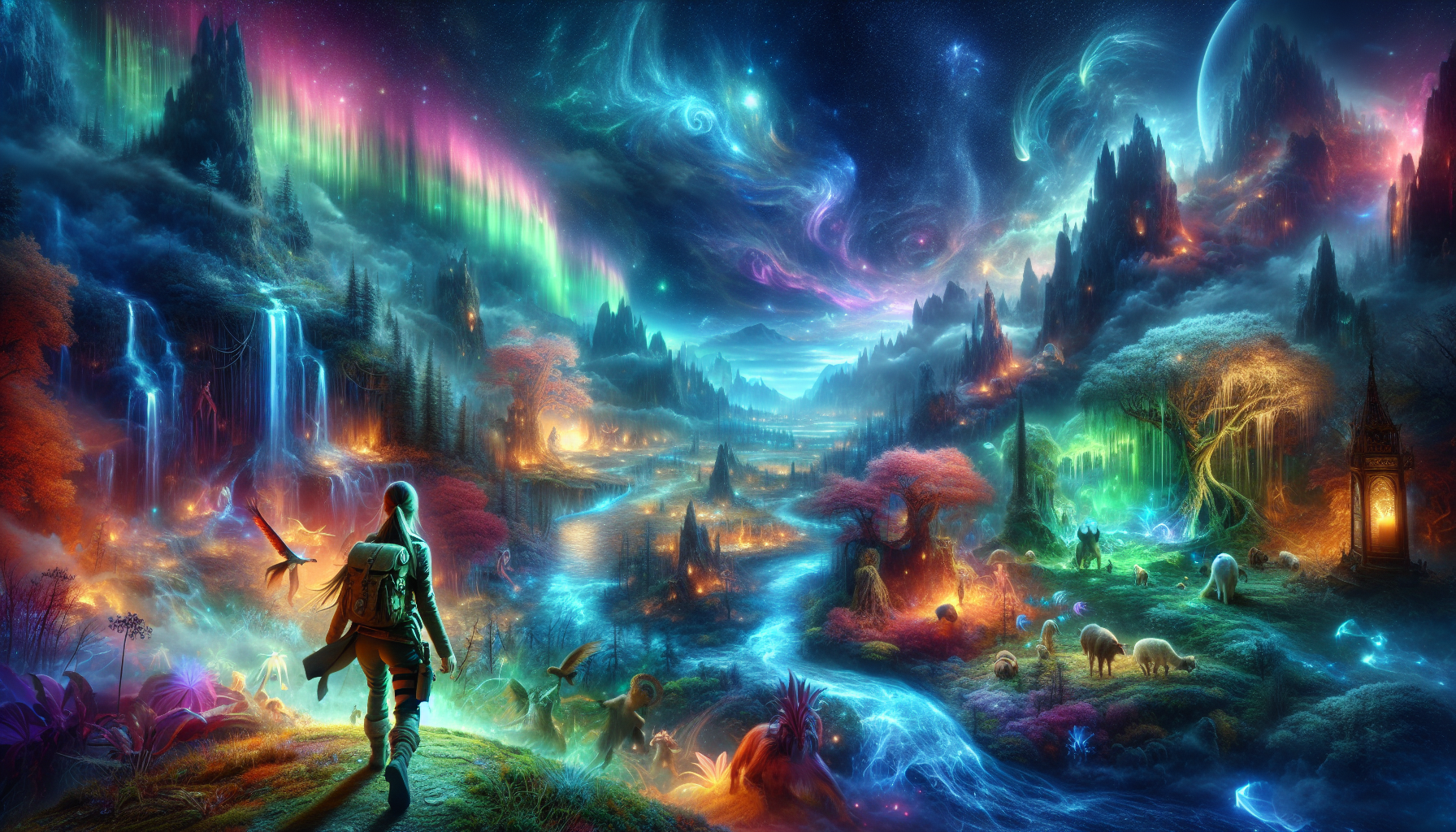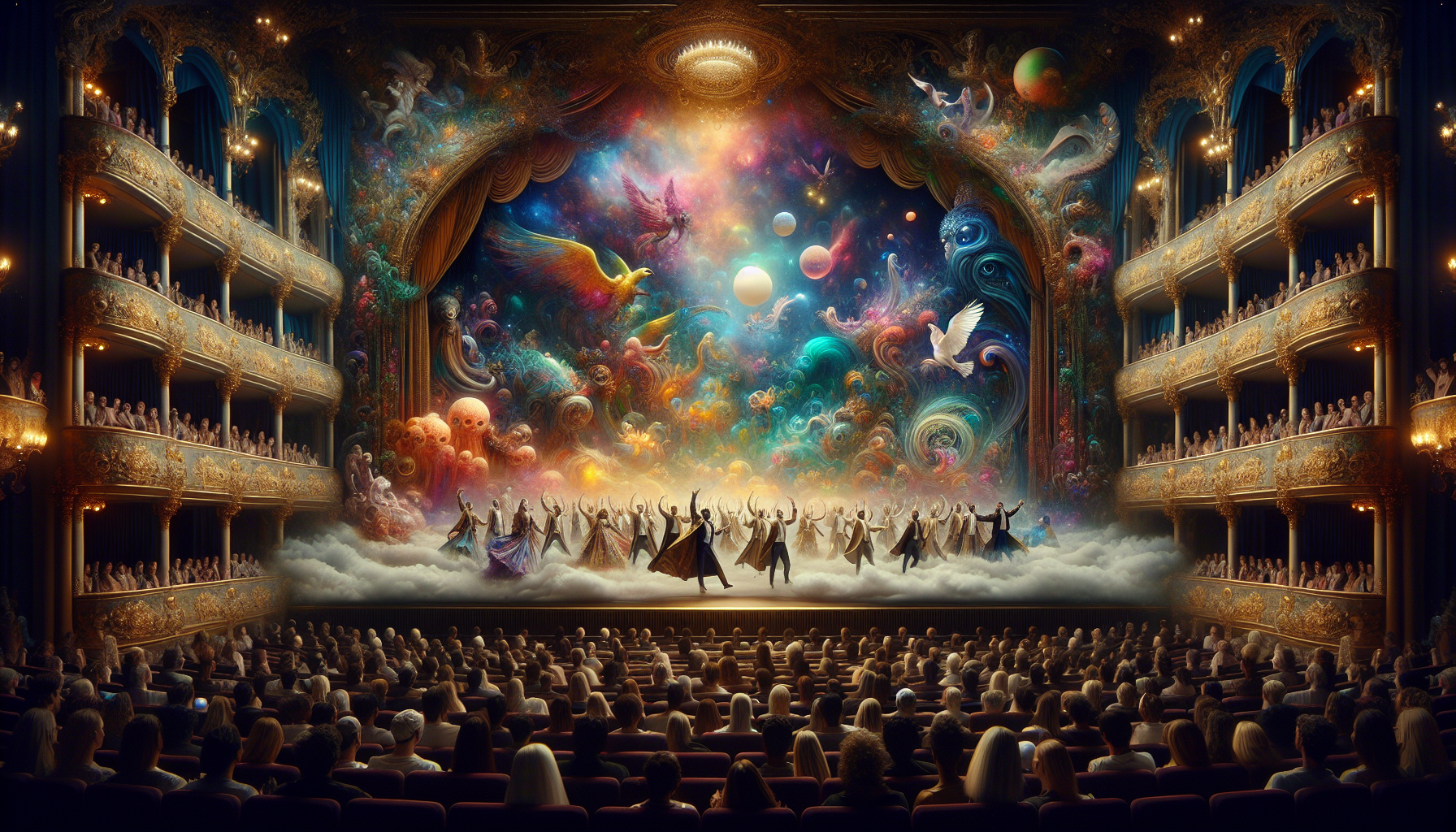In the quiet sanctuary of our sleep, dreams serve as both a respite and a mirror reflecting our innermost thoughts, fears, and desires. Yet, there are nights when this serene escape morphs into a realm of terror—when nightmares, those haunting specters of our subconscious, invade our slumber with vivid intensity. These nocturnal phantoms can jolt us awake in a cold sweat, their unsettling echoes lingering long after dawn has broken. But what happens when the boundaries between dream and reality blur, and these nightmares seep into our waking lives? Welcome to the unnerving exploration of “Beyond the Dream: When Nightmares Become Reality,” where we delve into the psychology behind these distressing experiences and uncover their profound impact on our everyday existence.
Nightmares have long intrigued and mystified humankind, inspiring a multitude of interpretations across cultures and eras. While they are often dismissed as mere figments of imagination, these nocturnal narratives can wield significant power over our mental and emotional well-being. Recent studies have begun to shed light on the intricate connections between nightmares and mental health, suggesting that they may serve as indicators of underlying psychological distress. Throughout this article, we will unravel the complex relationship between nightmares and anxiety, depression, and even post-traumatic stress disorder. By understanding these links, we aim to provide valuable insights into how nightmares can act as both a symptom and a catalyst for mental health challenges.
But the story doesn’t end with psychological implications. Nightmares also intersect with the world of sleep disorders, affecting not only the quality of our rest but also our overall health. We will examine conditions such as nightmare disorder and sleep paralysis, exploring how these phenomena disrupt sleep patterns and lead to daytime fatigue and impaired cognitive function. Furthermore, we’ll venture into the realm of lucid dreaming, where individuals harness the power to confront and potentially conquer their nightmares, transforming them from paralyzing fears into opportunities for personal growth and self-discovery.
As we navigate this fascinating terrain, we will also touch upon cultural and societal influences that shape our perception of nightmares. From ancient myths and folklore to modern media and technology, the portrayal of nightmares has evolved, yet they remain a universal and enduring aspect of the human experience. Through interviews with sleep specialists, psychologists, and individuals who have faced the challenges of living with recurring nightmares, we aim to offer a comprehensive understanding of this enigmatic topic. So, buckle up as we embark on a journey beyond the dreamscape, where we confront the shadows lurking in our minds and discover what happens when nightmares become an inescapable part of our reality. 🌙
Understanding the Intersection of Dreams and Reality
Dreams have fascinated humans for centuries, serving as a canvas for our subconscious thoughts, fears, and desires. They often defy logic and blend memories, fantasies, and sometimes, nightmares. However, what happens when the imaginary realm of nightmares crosses the threshold into our waking life? The phenomenon of dreams turning into reality can be both intriguing and terrifying, warranting a deeper understanding.
In exploring this phenomenon, we first need to delve into the science of dreaming. Dreams typically occur during the REM (Rapid Eye Movement) stage of sleep, where the brain is highly active. It’s in this state that most vivid dreams unfold. These dreams can range from benign, nonsensical narratives to intense and haunting nightmares that leave a lasting impression upon waking. The boundary between dreaming and reality can blur, particularly when nightmares are involved, sometimes leading to experiences such as sleep paralysis or night terrors. These conditions can trick the mind into perceiving a nightmare as reality, especially if the individual awakens abruptly during a REM cycle.
Furthermore, the psychological impacts of these nightmares can seep into daily life. Individuals who frequently experience vivid nightmares may suffer from anxiety, stress, and even post-traumatic stress disorder (PTSD). The fear that a recurring nightmare might manifest in reality can exacerbate these conditions, creating a self-perpetuating cycle of distress. The interplay between dreams and reality is not merely a psychological curiosity but a genuine concern for those affected by persistent nightmares.
The Science Behind Nightmares: Causes and Implications
Nightmares are more than just frightening dreams; they are complex phenomena influenced by various biological, psychological, and external factors. Understanding the root causes of nightmares can shed light on how they might bleed into reality. Biological factors include genetics, sleep disorders, and even certain medications that affect brain chemistry. For instance, antidepressants and blood pressure medications have been known to intensify dreams, sometimes turning them into full-fledged nightmares.
On the psychological front, stress, trauma, and emotional distress are significant contributors to nightmares. The brain processes these emotions during sleep, often resulting in unsettling dreams. In individuals with PTSD, for example, the recurrence of traumatic events during sleep is a common and debilitating symptom. These nightmares can become so vivid and realistic that distinguishing them from reality upon waking becomes challenging, leading to a state of hyper-vigilance during waking hours.
External factors, such as lifestyle and environment, also play a role. Irregular sleep patterns, consumption of alcohol or caffeine before bed, and exposure to stressors like media or life events can increase the likelihood of nightmares. The combination of these factors creates a fertile ground for nightmares to manifest and potentially influence waking life.
Table: Common Causes of Nightmares
CategoryExamplesBiologicalGenetic predisposition, medications, sleep disordersPsychologicalStress, trauma, PTSD, anxiety disordersExternalSleep environment, substance use, irregular sleep schedule
The Impact of Nightmares on Mental Health
The relationship between nightmares and mental health is complex and deeply interwoven. Nightmares can be both a symptom and a cause of mental health issues, creating a cycle that is difficult to break. For instance, individuals suffering from anxiety or depression are more likely to experience nightmares. Conversely, frequent nightmares can exacerbate these conditions, leading to a decrease in overall well-being.
Moreover, nightmares can significantly impact sleep quality, leading to sleep deprivation. Chronic sleep deprivation affects cognitive functions, emotional regulation, and physical health. It can also heighten the sensitivity to stress and anxiety, further contributing to the frequency and intensity of nightmares. The vicious cycle of poor sleep and nightmares can lead to a decline in both mental and physical health, making it crucial to address the underlying issues contributing to these sleep disturbances.
Coping Strategies and Treatments for Nightmares
Addressing nightmares involves a multifaceted approach that includes lifestyle changes, psychological interventions, and, in some cases, medical treatment. One of the first steps is to establish a healthy sleep routine. This includes maintaining a consistent sleep schedule, creating a restful sleep environment, and avoiding stimulants such as caffeine and alcohol before bed. Regular exercise and relaxation techniques like meditation or yoga can also help reduce stress and improve sleep quality.
Psychotherapy plays a significant role in managing nightmares, especially for those linked to trauma or psychological distress. Techniques such as imagery rehearsal therapy (IRT) involve rewriting the ending of a nightmare while awake, reducing its emotional impact. Cognitive-behavioral therapy (CBT) can also be effective in altering the thought patterns that contribute to nightmares.
For individuals whose nightmares are resistant to lifestyle changes and therapy, medication might be considered. Drugs such as prazosin have been used to reduce the frequency and intensity of nightmares, particularly in PTSD patients. However, the use of medication should be closely monitored by a healthcare professional to minimize potential side effects.
Watch this insightful video for more information:
Understanding Nightmares – The Science Behind Your Scary Dreams (Psych Hub)
The Cultural and Historical Perspective on Nightmares
Nightmares have been a part of human culture and history for millennia, with various interpretations and explanations across different societies. In ancient times, nightmares were often attributed to supernatural forces or the displeasure of gods. For example, the ancient Greeks believed nightmares were messages from the gods, offering insight or warnings.
Throughout history, nightmares have been depicted in art, literature, and folklore. In medieval Europe, the concept of the “night hag” was a common explanation for the sensation of being suffocated or paralyzed during a nightmare. This belief was so pervasive that it influenced the term “nightmare,” derived from the Old English “mare,” a mythological demon that tormented sleepers.
In modern times, the interpretation of nightmares has shifted towards a scientific understanding. However, cultural beliefs and superstitions still persist in some societies, influencing how individuals perceive and cope with nightmares. Exploring these cultural and historical contexts provides a deeper understanding of the human experience of nightmares and their impact on our psyche.
- Maintain a consistent sleep routine.
- Practice relaxation techniques before bed.
- Seek therapeutic interventions if necessary.
- Avoid stimulants such as caffeine and alcohol.
- Consider medical treatment under professional guidance.

Conclusion
Crafting a conclusion that encapsulates the essence of the article “Beyond the Dream: When Nightmares Become Reality” is both a privilege and a responsibility. Throughout this exploration, we’ve delved into the psychological, emotional, and societal facets of how nightmares transcend their nocturnal boundaries, seeping into our waking lives. Let us now revisit the core insights, emphasizing their relevance and urging further reflection and action.
From the outset, we examined the nature of nightmares, distinguishing them from mere bad dreams by their intensity and the lingering impact they leave on our consciousness. Nightmares, as we discussed, are not just products of our sleeping minds; they are deeply intertwined with our waking realities, often reflecting our fears, anxieties, and unresolved traumas. This understanding is crucial, as it sets the stage for a deeper exploration of how these nocturnal terrors can influence our daily lives, affecting mental health, relationships, and overall well-being.
A significant portion of our discussion centered around the psychological impact of nightmares. We explored how recurring nightmares can exacerbate conditions like anxiety and depression, creating a vicious cycle where disturbed sleep leads to increased stress and emotional imbalance. This connection underscores the importance of addressing nightmares not just as isolated incidents but as potential indicators of broader mental health issues. The insights from professionals in psychology and psychiatry highlighted the need for holistic approaches to treatment, integrating therapy, medication, and lifestyle adjustments.
Equally important was our exploration of the cultural and historical perspectives on nightmares. Across different societies and epochs, nightmares have been interpreted through various lenses—supernatural, religious, and scientific. This cultural tapestry enriches our understanding of nightmares, providing a backdrop against which we can appreciate the universality of these experiences. By acknowledging the diverse interpretations, we foster a more inclusive dialogue that respects different viewpoints while seeking common ground in addressing the challenges nightmares present.
One of the most compelling sections of our article addressed the real-life implications of nightmares. The narratives shared by individuals who have experienced life-altering nightmares provided a poignant reminder of the power these experiences hold. From influencing career choices to impacting personal relationships, the stories we encountered illustrated the profound effect nightmares can have beyond the confines of sleep. These accounts serve as a call to action, urging us to take nightmares seriously and to seek help when needed.
Moreover, we discussed practical strategies for coping with and mitigating the impact of nightmares. Techniques such as lucid dreaming, cognitive-behavioral therapy for insomnia (CBT-I), and mindfulness practices offer hope for those seeking relief. By empowering individuals with tools to confront and transform their nightmares, we promote resilience and self-efficacy. The availability of resources and professional guidance is crucial in this endeavor, emphasizing that no one needs to face their nightmares alone.
As we draw this discussion to a close, it is essential to reinforce the importance of the theme we have explored. Nightmares are more than mere figments of our imagination; they are reflections of our deepest fears and challenges, offering insights into our psyche that are both valuable and transformative. By acknowledging the reality of nightmares and their impact, we open the door to healing and growth.
We encourage you, dear reader, to reflect on your own experiences and consider how the insights shared here might apply to your life or the lives of those around you. If this article has resonated with you, we invite you to share it with others, sparking conversations that may lead to greater understanding and support. Engage with us by leaving your thoughts and experiences in the comments section below. Your voice adds richness to this dialogue and helps build a community of empathy and shared learning.
In conclusion, let us embrace the potential that lies beyond our dreams and nightmares. By facing these experiences with courage and curiosity, we can transform fear into opportunity, unlocking pathways to a more fulfilling and aware existence. As we navigate the complex terrain of our minds, may we find strength in our shared humanity and the knowledge that we are not alone in our journey.
🌟 Thank you for being a part of this exploration. Stay curious, stay brave, and remember that even in the darkest of dreams, there is always a glimmer of light waiting to be discovered. 🌟
For further reading, you may explore these active resources:
We look forward to continuing this journey with you. Until next time, sweet dreams!
Toni Santos is a visual storyteller and dream archivist whose work explores the delicate boundary between memory and imagination. Through layered visuals and symbolic design, Toni captures the fleeting essence of dreams — those strange, beautiful, and sometimes haunting fragments that drift through sleep and linger in waking thought.
His creative journey is rooted in a deep fascination with the subconscious and the imagery it conjures. From half-remembered landscapes to recurring symbols and surreal encounters, each piece Toni brings to life becomes a portal into the inner archive — where time distorts, meanings shift, and personal mythology takes form.
With a background in handcrafted artistry and visual composition, Toni merges intuition with intention. His work doesn’t just depict dreams; it preserves them, translating ephemeral moments into tangible expressions that evoke emotion, curiosity, and quiet revelation. Each visual is both a record and an invitation to explore the rich terrain of inner life.
As the guiding voice behind Vizovex, Toni offers illustrated dream journals, symbolic studies, and visual essays that help others connect with the poetic structure of their own subconscious landscapes. His art becomes a mirror — not just of what we see at night, but of what we carry deep within.
His work is a tribute to:
The fragile beauty of forgotten dreams
The language of symbols in the subconscious mind
The inner worlds we visit but rarely name
Whether you’re a lucid dreamer, a seeker of hidden meanings, or someone fascinated by the mystery of sleep-born stories, Toni welcomes you to step into a space where dreams are not lost — they are archived, one vision, one sketch, one silent narrative at a time.





